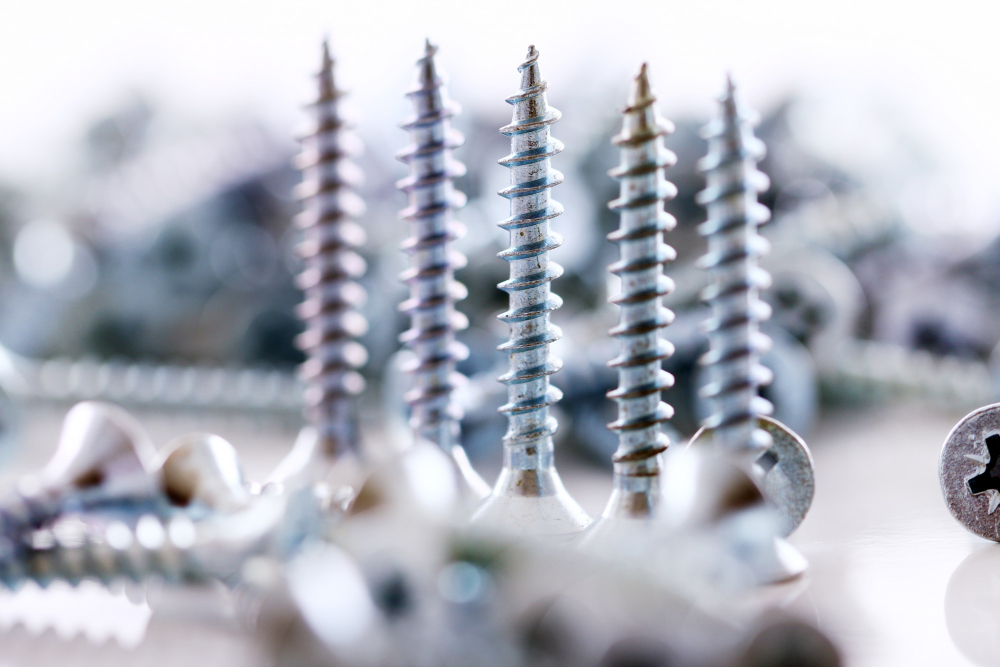If you’re working on a home improvement project, especially involving wood, you might find yourself wondering, “Can you use fine thread drywall screws for wood?” It’s a valid question because screws come in various types, each designed for specific materials and purposes. Understanding the right type of screw to use for a particular job can make all the difference between a well-done project and one that falls apart over time.
This article explores everything you need to know about using fine thread drywall screws for wood, covering when it’s appropriate, potential issues, and alternative options.
What Are Fine Thread Drywall Screws?
Fine thread drywall screws are specifically designed for attaching drywall to metal studs. Their fine threading allows them to bite into metal and hold securely, unlike coarse thread screws, which are meant for wood. These screws are generally made of hardened steel and have a bugle head, which helps prevent damage to drywall surfaces during installation.
Characteristics of Fine Thread Drywall Screws
- Fine threading: Ideal for metal studs
- Length variations: Can range from 1 inch to 3 inches
- Material: Made of hardened steel for strength
- Bugle head: Prevents tearing or damage to drywall surfaces
Why Fine Thread Drywall Screws Aren’t Ideal for Wood
When considering whether you can use fine thread drywall screws for wood, the short answer is not recommended. Here’s why:
- Thread Design: Fine thread screws are designed for metal, not wood. Wood, being softer than metal, requires a screw with coarse threads to grip the material more effectively.
- Holding Power: Fine thread screws do not grip wood well. This lack of grip may cause the screw to strip or pull out over time, especially if the wood expands or contracts due to environmental factors like temperature and humidity.
- Shear Strength: Drywall screws are designed to support lightweight drywall, not heavy wooden structures. The shear strength of these screws is lower than wood screws, meaning they could snap under stress when used in wood.
Exceptions Where Fine Thread Drywall Screws Can Be Used
While it’s generally not advisable, there are certain situations where fine thread drywall screws might work for light, temporary wood applications, such as:
- Lightweight wooden projects: Small frames or temporary wooden fixtures where structural integrity isn’t crucial.
- Hanging drywall on plywood or softwood: In cases where you’re attaching drywall to a wooden frame, and the load isn’t heavy.
However, in most cases, it’s best to use coarse thread screws or dedicated wood screws for wood projects.
The Right Type of Screw for Wood Projects
If fine thread drywall screws aren’t ideal for wood, what should you use? Coarse thread drywall screws or wood screws are your best bet.
Coarse Thread Drywall Screws
Coarse thread drywall screws are a better option for wood-based projects because their wider threads allow for a stronger grip on the softer material.
- Better for softwood: The wide threads are ideal for holding onto the fibers of wood, providing better support and preventing the screw from stripping out.
- Longer-lasting: Since coarse-thread screws are designed to handle the expansion and contraction of wood, they are more likely to hold up over time compared to fine-thread screws.
Wood Screws
For more intensive projects, wood screws are the most reliable choice. They are specifically designed to work with wood, making them more durable and effective.
- Optimal for hardwoods and softwoods: Whether you’re working with dense hardwood or softer materials, wood screws are engineered to deliver the best performance.
- Thread and shank design: Wood screws have a thicker shank and deeper threads, making them excellent at handling the load and forces within wooden structures.
Types of Wood Screws
- Flat head screws: These screws sit flush with the wood surface and are commonly used in framing and finishing.
- Pan head screws: These have a slightly rounded head and are often used when the screw head needs to be visible or decorative.
Potential Problems with Using the Wrong Screws in Wood
When you use fine thread drywall screws for wood, several issues may arise, including:
Stripping of the Screw
Fine thread screws can easily strip out in wood because they don’t have the gripping power needed to stay securely fastened. This stripping may not be immediately noticeable, but over time, it can cause joints or fixtures to loosen.
Snap or Breakage
Fine thread screws are made for the lightweight material of drywall, not heavy wooden structures. If too much stress is placed on them, they may snap or break, leading to potential safety hazards in structural wood projects.
Poor Long-Term Durability
Wood naturally expands and contracts with changes in humidity and temperature. The fine threads on drywall screws don’t have enough grip to withstand this natural movement, causing the screws to work themselves loose over time.
Increased Risk of Structural Failure
If you’re using fine thread screws in load-bearing or structural elements of wood projects, you’re running the risk of eventual structural failure. The screws might not support the weight or forces involved, leading to serious consequences.
How to Properly Secure Wood: Best Practices
To avoid issues, here are some best practices to follow when working with wood, especially when choosing screws:
1. Choose the Right Screw Type
Always choose screws that are designed for the material you’re working with. For wood, coarse thread screws or wood screws will give you the grip and durability needed for long-lasting, secure construction.
2. Pre-Drill Pilot Holes
Before inserting screws into wood, pre-drill pilot holes. This will help prevent splitting the wood and ensure that the screws go in smoothly without damaging the surrounding material.
3. Don’t Over-Torque
Be mindful of how much torque you’re applying when inserting screws. Over-tightening can strip the threads, weakening the hold, or even snap the screw in two.
4. Use the Correct Screw Length
For most woodworking projects, you’ll want to use screws that are at least 1 ½ times longer than the material you’re fastening. This ensures a strong connection without risking a weak hold or screw breakage.
Alternatives to Fine Thread Screws for Wood
If fine thread drywall screws aren’t the right choice, here are some alternative fasteners that work well in wood projects:
Wood Screws
As mentioned earlier, wood screws are the optimal fastener for any wood-related project. They provide a secure hold and are designed specifically for the material.
Deck Screws
For outdoor or pressure-treated wood, deck screws are a fantastic choice. They are corrosion-resistant and designed to handle the stresses of outdoor elements.
Lag Screws
For heavy-duty applications such as securing beams or large wooden structures, lag screws are incredibly durable and provide immense holding power.
Conclusion: The Right Tools for the Right Job
In conclusion, while you can technically use fine thread drywall screws for wood in very light, non-structural applications, it is far from ideal. For the best results, always choose coarse thread screws or wood screws, as they are designed to grip wood securely and withstand the stresses that come with woodworking. Using the right screw will not only make your project stronger but also ensure its longevity.
When in doubt, always remember that using the correct screw for the material is crucial for creating safe, secure, and lasting construction. So, before reaching for those fine thread drywall screws, ask yourself if your project will truly benefit from using them—or if a more suitable fastener might be the better option.

